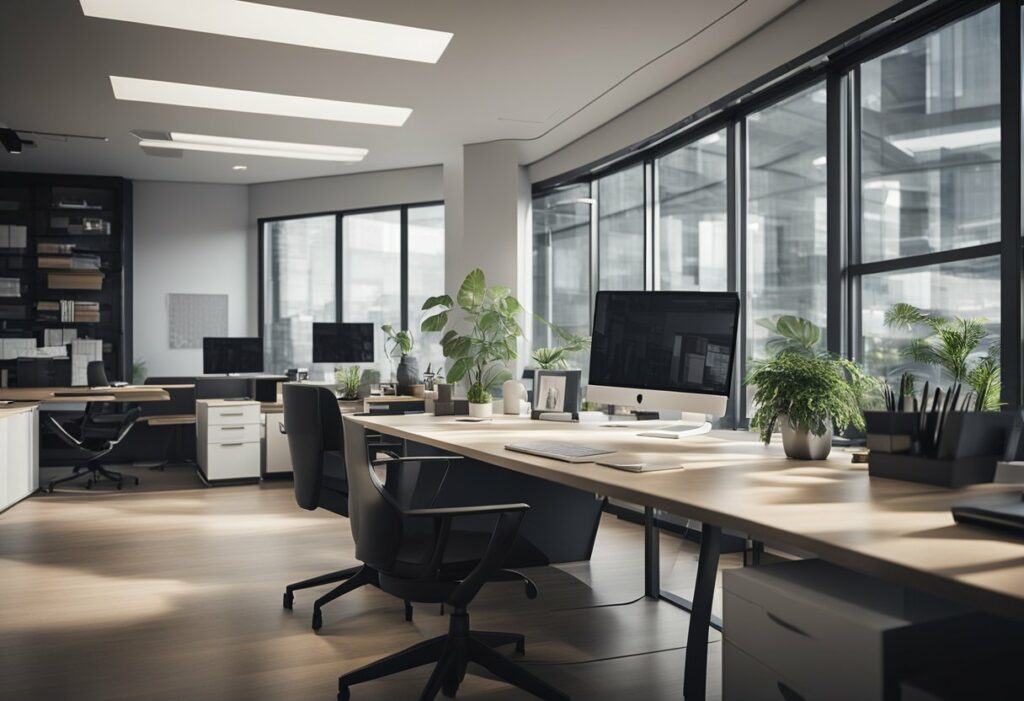Architect Office Design Ideas: Elevate Your Workspace with These Creative Tips
Are you an architect looking for office design ideas? Do you want to create a workspace that inspires creativity and productivity? Designing an architect’s office requires a balance of functionality and aesthetics. It should be a space that reflects your brand, culture, and values while providing a comfortable and efficient work environment.
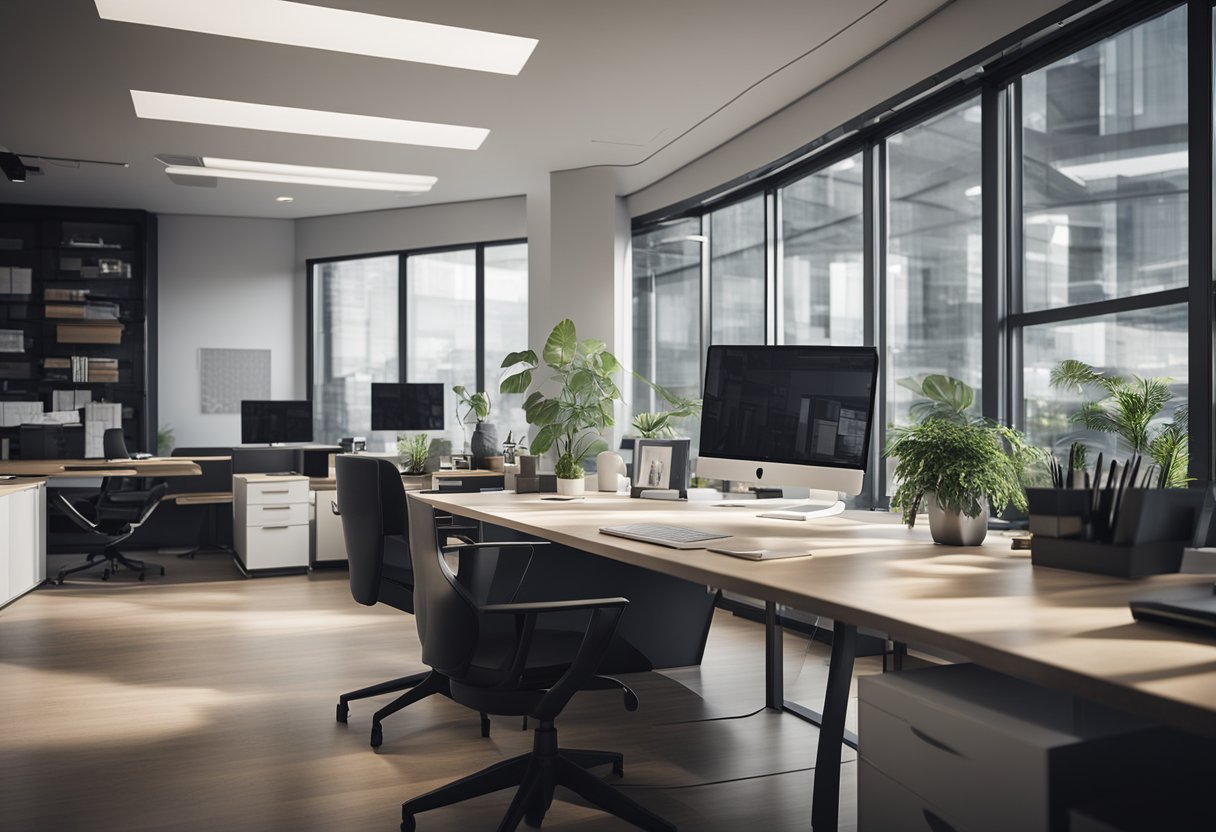
Innovative Design Concepts for Modern Architect Offices are constantly evolving. The latest trends include open-plan layouts, natural materials, and flexible workspaces. Modern architects are also incorporating technology and sustainability into their designs to create a more efficient and eco-friendly workspace. With so many design options available, it’s important to choose a concept that aligns with your brand and values.
Key Takeaways
- Designing an architect’s office requires a balance of functionality and aesthetics.
- Innovative Design Concepts for Modern Architect Offices include open-plan layouts, natural materials, and flexible workspaces.
- Incorporating technology and sustainability into your office design can create a more efficient and eco-friendly workspace.
Innovative Design Concepts for Modern Architect Offices
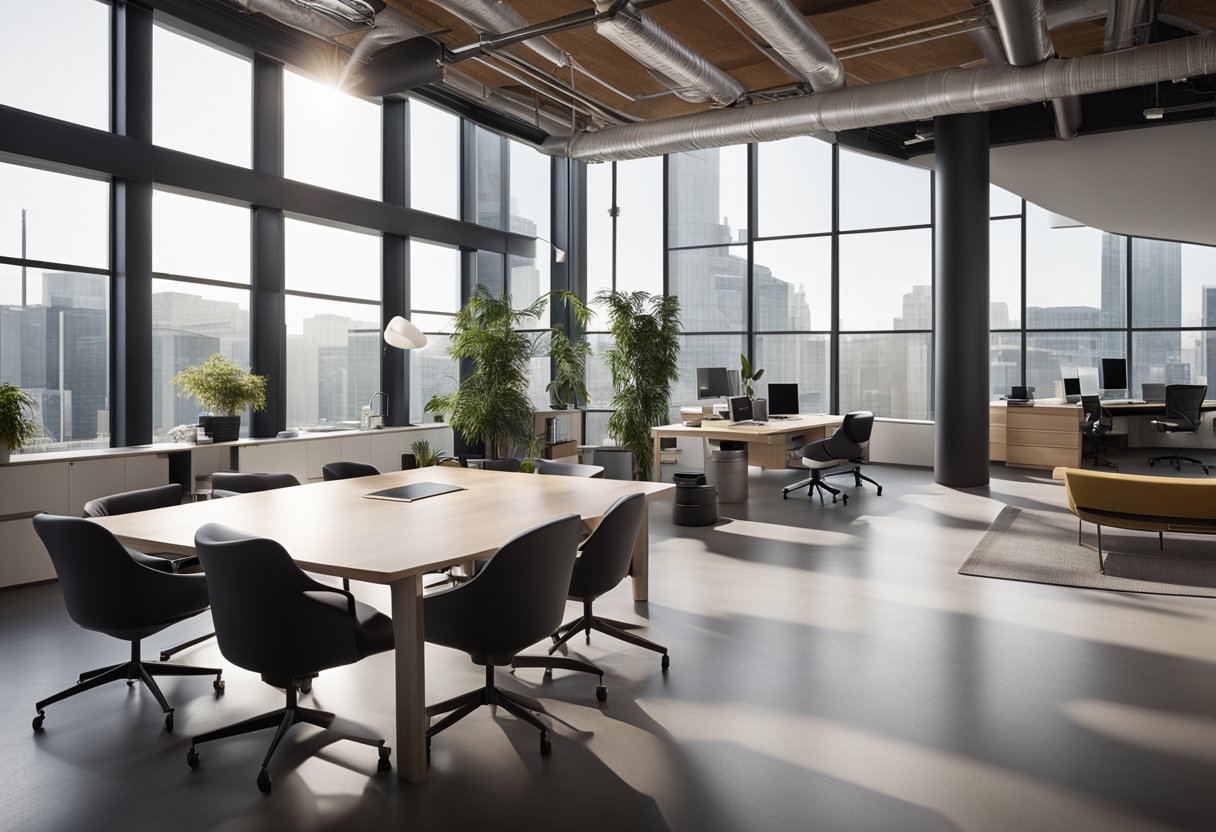
As an architect, you understand the importance of creating a functional and inspiring workspace that fosters creativity and productivity. With the ever-evolving demands of the modern workforce, it’s essential to incorporate innovative design concepts that meet the needs of your clients and employees. In this section, we’ll explore some of the latest trends and ideas for designing modern architect offices.
Sustainable Practices and Materials
Sustainability is a key consideration in modern architecture, and it’s no different when it comes to office design. Incorporating sustainable practices and materials not only helps the environment but also creates a healthier and more productive workspace. Consider using recycled materials, energy-efficient lighting, and green roofs to reduce your carbon footprint and create a more sustainable office environment.
Incorporating Technology and Collaboration Spaces
In today’s fast-paced world, technology and collaboration are essential for success. Incorporating technology into your office design can help create a more efficient and productive workspace. Consider adding smart technology, such as voice-activated assistants and touchless controls, to streamline your workflow. Collaboration spaces, such as meeting rooms and coworking spaces, can also foster teamwork and creativity.
Exploring Hybrid Office Layouts
With the rise of remote work, hybrid office layouts have become increasingly popular. A hybrid office layout combines traditional office spaces with remote workspaces, creating a flexible and adaptable work environment. Consider designing a workspace that includes both private and open-plan areas, as well as areas for virtual meetings and video conferencing.
Designing for Health and Well-being
Creating a healthy and comfortable workspace is essential for employee well-being and productivity. Consider incorporating biophilic design elements, such as natural lighting, greenery, and natural materials, to create a calming and restorative environment. Ergonomic furniture, such as adjustable desks and chairs, can also promote physical health and comfort.
The Role of Furniture and Equipment
Furniture and equipment play a crucial role in office design. Consider investing in high-quality, ergonomic furniture that promotes comfort and productivity. Smart office equipment, such as standing desks and task lighting, can also help create a more functional and efficient workspace.
Aesthetic Considerations and Branding
Aesthetics and branding are essential for creating a cohesive and inspiring workspace. Consider incorporating your brand’s colours and logo into your office design to create a cohesive and recognisable look. Artwork and other decorative elements can also add personality and character to your workspace.
Case Studies: Award-Winning Office Designs
Looking for inspiration? Check out some of the award-winning office designs from around the world. From the Apos2 office in Amsterdam to the Rios Clementi Hale Studios office in California, these designs showcase innovative and inspiring office spaces that promote creativity and productivity.
In conclusion, designing a modern architect office requires careful consideration of the latest trends and ideas. By incorporating sustainable practices, technology, and collaboration spaces, you can create a functional and inspiring workspace that fosters creativity and productivity.
Global Inspirations and Localised Designs
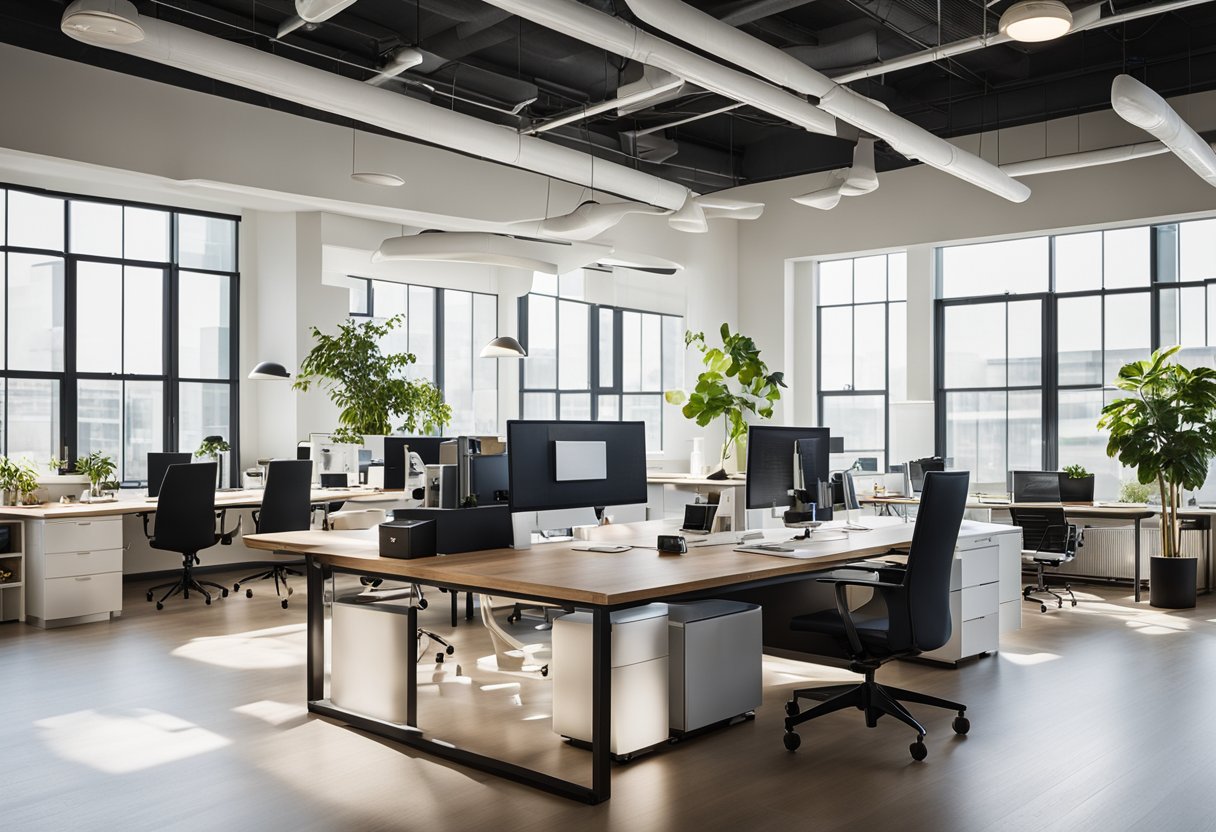
When it comes to designing an architect office, there are endless possibilities for inspiration. From the bustling streets of Amsterdam to the sleek skyscrapers of Singapore, there are plenty of global influences to draw from. However, it’s important to remember that every location has its own unique context and culture that should be taken into account when designing a space. Here are some tips for creating a design that balances global inspirations with localised designs.
Influences from Architecture Hotspots
If you’re looking for inspiration, there are plenty of architecture hotspots around the world to draw from. For example, Amsterdam is known for its innovative use of space and creative solutions to housing shortages. In contrast, Singapore is home to some of the most futuristic and high-tech buildings in the world. By taking inspiration from these architecture hotspots, you can create a design that is both cutting-edge and functional.
Adapting International Trends to Local Contexts
While it’s important to draw inspiration from global trends, it’s equally important to adapt those trends to local contexts. For example, a coworking space in China might look very different from a coworking space in New York, even if they both draw inspiration from the same international trend. By adapting international trends to local contexts, you can create a design that feels authentic and relevant to the people who will be using the space.
Collaborating with Local Artists and Craftsmen
One way to create a design that is both global and local is to collaborate with local artists and craftsmen. By using locally sourced materials and working with local artisans, you can create a space that feels like it belongs in the local context. Additionally, collaborating with local artists and craftsmen can bring a fine touch to your projects.
In conclusion, designing an architect office that balances global inspirations with localised designs requires a thoughtful approach. By drawing inspiration from architecture hotspots, adapting international trends to local contexts, and collaborating with local artists and craftsmen, you can create a space that feels both cutting-edge and authentic.
Frequently Asked Questions
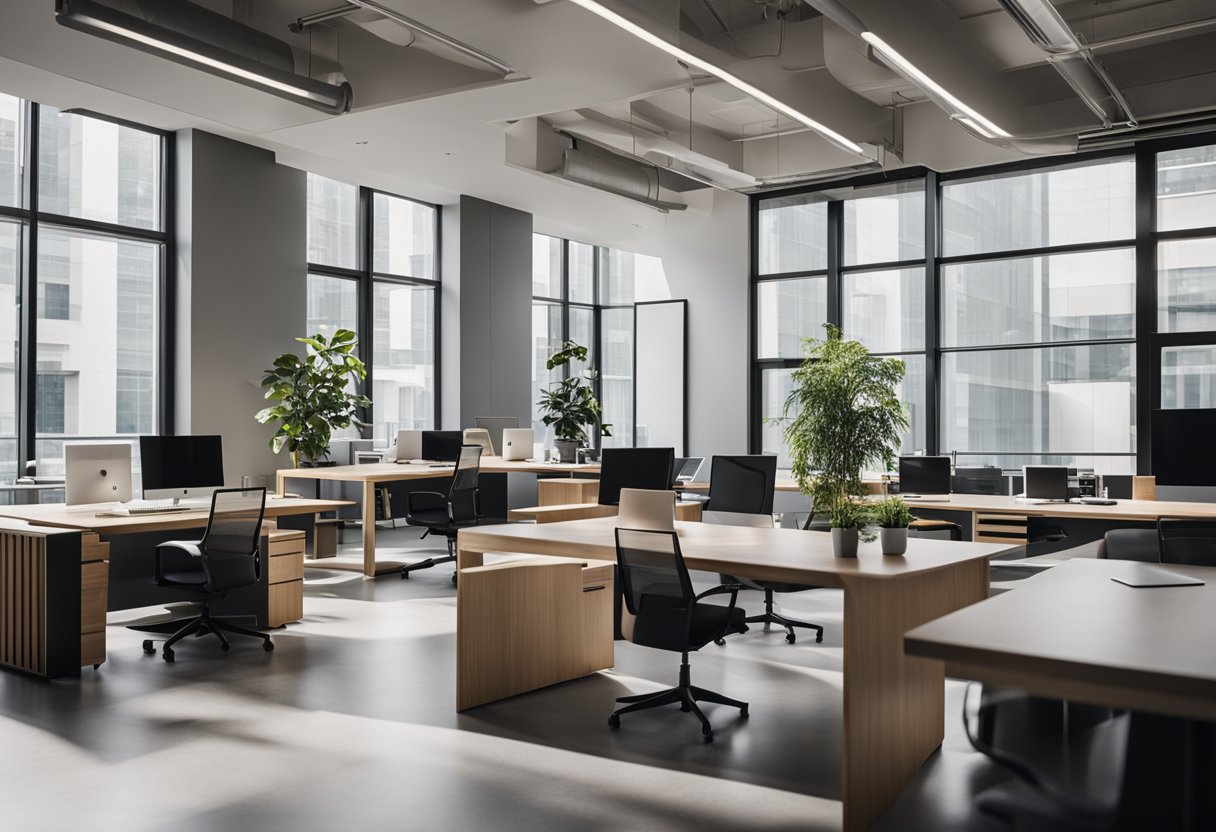
What are the latest trends in modern architecture office layouts?
Modern architecture office layouts are all about creating a collaborative and flexible workspace. The latest trends include open floor plans, multipurpose spaces, and the use of natural light. You can also incorporate greenery and biophilic design elements to create a calming and inspiring environment.
How can you maximise space in a compact architect’s office?
Maximising space in a compact architect’s office can be challenging, but there are several strategies you can use. One approach is to use multipurpose furniture, such as desks that can be converted into meeting tables. You can also create storage solutions that are built into the walls or under the desks. Additionally, you can use glass partitions to create the illusion of more space.
Where can I find the most inspiring architect office interiors on Pinterest?
Pinterest is a great resource for finding inspiring architect office interiors. You can search for keywords such as “architect office design” or “modern architecture office” to find a variety of images and ideas. You can also follow design blogs and architecture magazines to stay up-to-date on the latest trends.
What are the essential elements to include in a small architect’s office design?
When designing a small architect’s office, it’s important to include essential elements such as a work area, storage space, and a meeting area. You can also incorporate natural light, comfortable seating, and greenery to create a welcoming environment. Additionally, you can use colour and texture to add visual interest and personality to the space.
Could you share some successful case studies of innovative architect office designs?
There are many successful case studies of innovative architect office designs. One example is the Google Zurich office, which features a playful and colourful design with flexible workspaces and recreation areas. Another example is the Airbnb San Francisco office, which incorporates local artwork and natural materials to create a warm and inviting space.
What are the key considerations when planning the floor plan of an architect’s office?
When planning the floor plan of an architect’s office, it’s important to consider factors such as workflow, privacy, and natural light. You should also consider the number of employees and the type of work they will be doing. Additionally, you should think about the location of the office within the building and how it will interact with other spaces.

